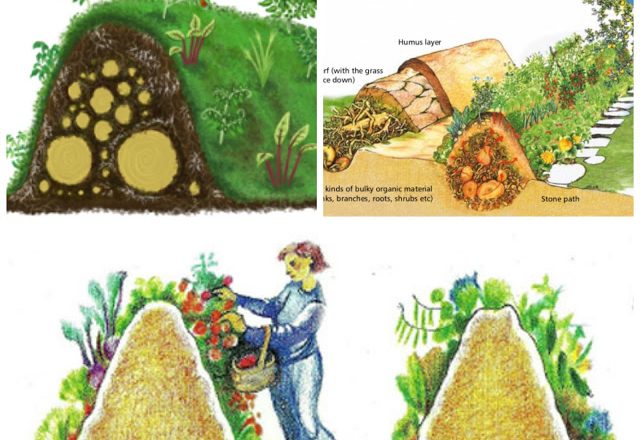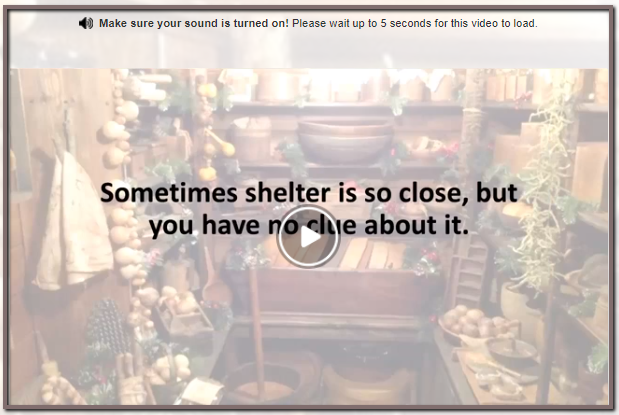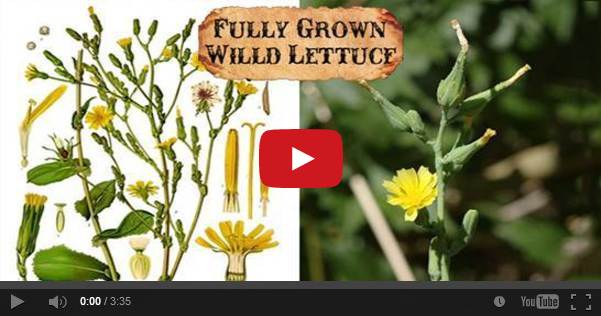Sustainable agriculture is a relatively new (and also very old) concept that is sweeping the world these days. Beautiful gardens are cropping up all over the country, and not just your basic flower garden. Many major universities have spent years and millions of dollars studying and even building amazing edible forest gardens that will produce larger and larger quantities of food as they grow.
One of my favorite agriculture experiences so far has been learning about hugelkulture. The name translates from German to mean “hill culture”, and it’s an amazingly simple concept.
You see, the concept of permaculture is to create self maintaining agriculture layouts that are modeled from ecosystems occurring naturally. Mother Nature knows best, after all. Massive rows of engineered plants may produce a bumper crop . . . once, but requires constant work, pesticides and watering, and must be rebuilt every growing season. Hugelkultur is almost the complete opposite. It uses nature’s own production to continually hydrate and feed your plants. And it’s so simple. Raised beds over rotting wood.
In nature, when trees are uprooted and collapse, within a few years, or even months, they become a completely different block of the ecosystem. As the fallen logs rot and decay, they become porous and soft, retaining moisture and an abundance of nutrients that aid in new plant growth. The dead logs are also havens for all sorts of wonderful critters, and store heat energy and nitrogen, creating a warm, nurturing haven for young plants.
Hugelkultur takes all of these benefits and puts them to work for your home garden. You can implement a raised bed system in your garden, maybe with some of those greedy plants that need lots of water to flourish, and see the benefits for yourself. The best part? If done correctly, your hugelkultur plot will not only maintain healthy soil, but as the logs decay and aerate (introduce air) the humus, they will actually become more productive over the years!
A simple concept:
Hugelkultur is a very basic concept. Raised beds of soil, over rotting logs. And there are many benefits to a plot like this.
You can garden with little irrigation and no fertilization. As the logs decay, they become spongy and absorbent. (This is why it’s important, but not necessary, to use older logs).
One big rain and the water will seep into the logs and slowly dissipate into the surrounding soil.
Believe it or not, many people water only once or even not at all with their hugelkultur beds. This may not be the case for everyone. When you first place the logs, if they are fresh cut, they will still absorb some water, but you may have to irrigate for the first year.
The gift that keeps giving:
Permaculture is wonderful thing. Building a sustainable, edible ecosystem is an investment in your future and your health. We all love fresh fruits and vegetables, but many find it difficult to find time to work outdoors. With a hugelkultur plot, your initial hard work will pay off more as the years go by. The decaying logs will expand and collapse, forming small air pockets that aerate the soil and helps avoid breaking up hard, packed soil every year. With the exception of the first year or so, the logs become spongy and absorbent.
And, last but not least, it benefits the environment:
Imagine you are walking in the woods after a nice summer rain. Droplets fall around you and you take a deep breath. That amazing earthy smell? Humic acid. With the word “acid” you may think it’s a bad thing, but it is actually one of the signs of healthy soil and is created through the decomposition of vegetative materials by microbes, this leads to the creation of the humus layer.
Humus is organic material that has broken down as far as it can. It allows soil organisms to feed and reproduce. Humic acid is also key in creating a fungal soil. The fungi in the soil bonds with plant roots and allow them to absorb more nutrients from the soil. Due to its dark color, it also helps absorb heat from the sun, and soils rich in humus will maintain higher temperatures that surrounding earth.
Your hugelkultur bed becomes a factory under your garden, mass producing these amazing resources right under your garden! The warm soil and composting logs also create a vacation spot for earthworms and other insects, which will further add to the nutrient content of your soil.
Well, we know there are many methods of permaculture, and this is only one. But it’s a good one. If you have a section of your yard or garden that you haven’t quite figured out what to do with, maybe a hugelkultur bed would be the perfect fit. Permaculture provides a future from which we can reap many benefits for years to come.
.
The video below is a brief introduction to hugelkultur by sustainability genius Jack Spirko:





